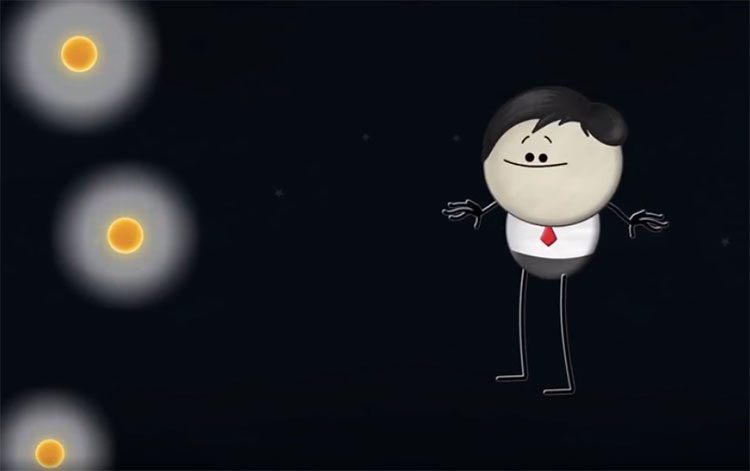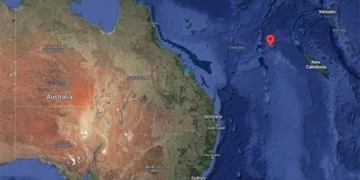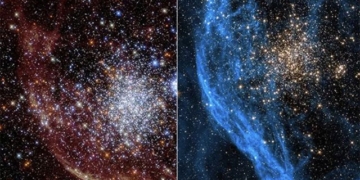Why is the Universe Dark? Could it be that Someone Forgot to Pay the Electric Bill? Not Quite!

The dark and blackness of space is due to our universe expanding.
Our Sun is a massive star, emitting an enormous amount of light. The universe is filled with countless stars shining like our Sun, to the extent that we can hardly count them all. With so many stars, one would expect space to be brightly illuminated, right? Is it because most stars are simply too far away? Astronomers suggest that this is not the only reason.
According to astronomers’ estimates, within the observable universe, there are approximately 200 sextillion stars. Many of these stars shine as brightly as, or even brighter than, our Sun. So why doesn’t the universe shine brilliantly?
American astronomer Brian Jackson explains that studying distant stars and planets helps us understand why the universe appears dark.
You might think it’s because the stars are very far from Earth. It’s true that stars become fainter the farther away they are. A star ten times farther away appears a hundred times dimmer. However, the great distance is not the only reason for the faintness of stars.
Imagine a scenario where the universe becomes so old that light from the farthest stars can finally reach Earth. In this hypothetical scenario, all stars in the universe remain stationary.
Picture the universe as a gigantic bubble with Earth at its center. If this bubble has a diameter of 10 light-years, it can contain a certain number of stars. Naturally, as you move a few light-years away, these stars appear dimmer.
If we expand this bubble to a size of 1,000 light-years, then to 1 million light-years, and finally to 1 billion light-years, the farthest stars within the bubble become even fainter. However, the larger the bubble becomes, meaning more stars are included, the more light sources there are. Even if the farthest stars appear extremely faint, the greater the number of stars, the more illuminated the night sky becomes.
At this point, it may seem contradictory, but we are about to find the answer.
In our bubble hypothesis, we imagined that the stars were not moving and that the universe was very old. In reality, the universe is only about 13 billion years old.
For humans, this is a long time, but in cosmic terms, it is still relatively short. It’s short enough that the light from stars more than 13 billion light-years away has yet to reach Earth. Therefore, the actual bubble surrounding Earth contains all the stars we can currently see, which only spans 13 billion light-years.

Galaxies looked like this about 13 billion years ago. Image captured by the James Webb Telescope (Image: NASA/ESA/CSA/STScI/Handout from Xinhua News Agency/ Getty Images).
In this bubble, there aren’t enough stars to fill and illuminate every direction you look. Of course, if you look in certain directions in the sky, you can see stars, but in many other directions, you won’t see any stars at all.
This is because, in those dark regions where stars should be visible, they are simply too far away for their light to have reached Earth yet. Over time, the light from these distant stars will gradually arrive at our location.
You might still wonder whether the night sky will eventually be completely illuminated. This brings us back to the original assumption: imagine all the stars are stationary, not moving. In reality, the universe is continuously expanding, with most distant galaxies moving away from Earth at speeds nearly equal to the speed of light.
Because these galaxies are receding from Earth so quickly, the light from their stars is not visible to the naked eye. This phenomenon is known as the Doppler effect or redshift.
Thus, even if these stars had enough time for their light to reach Earth, you still wouldn’t be able to see them with the naked eye. And therefore, the night sky will never be fully illuminated.
If you could wait even longer, eventually these stars would burn out and fade away. Stars similar to our Sun only exist for about 10 billion years. Astronomers predict that in the very distant future, around 1 trillion trillion years from now, the universe will become dark, containing only remnants of stars, such as white dwarfs and black holes.
Although the night sky we see is not densely packed with stars, we are living in a remarkably special time in the life of the universe. It is a time when we are fortunate enough to witness the night sky filled with wonders, both the darkness and the twinkling stars.


















































